
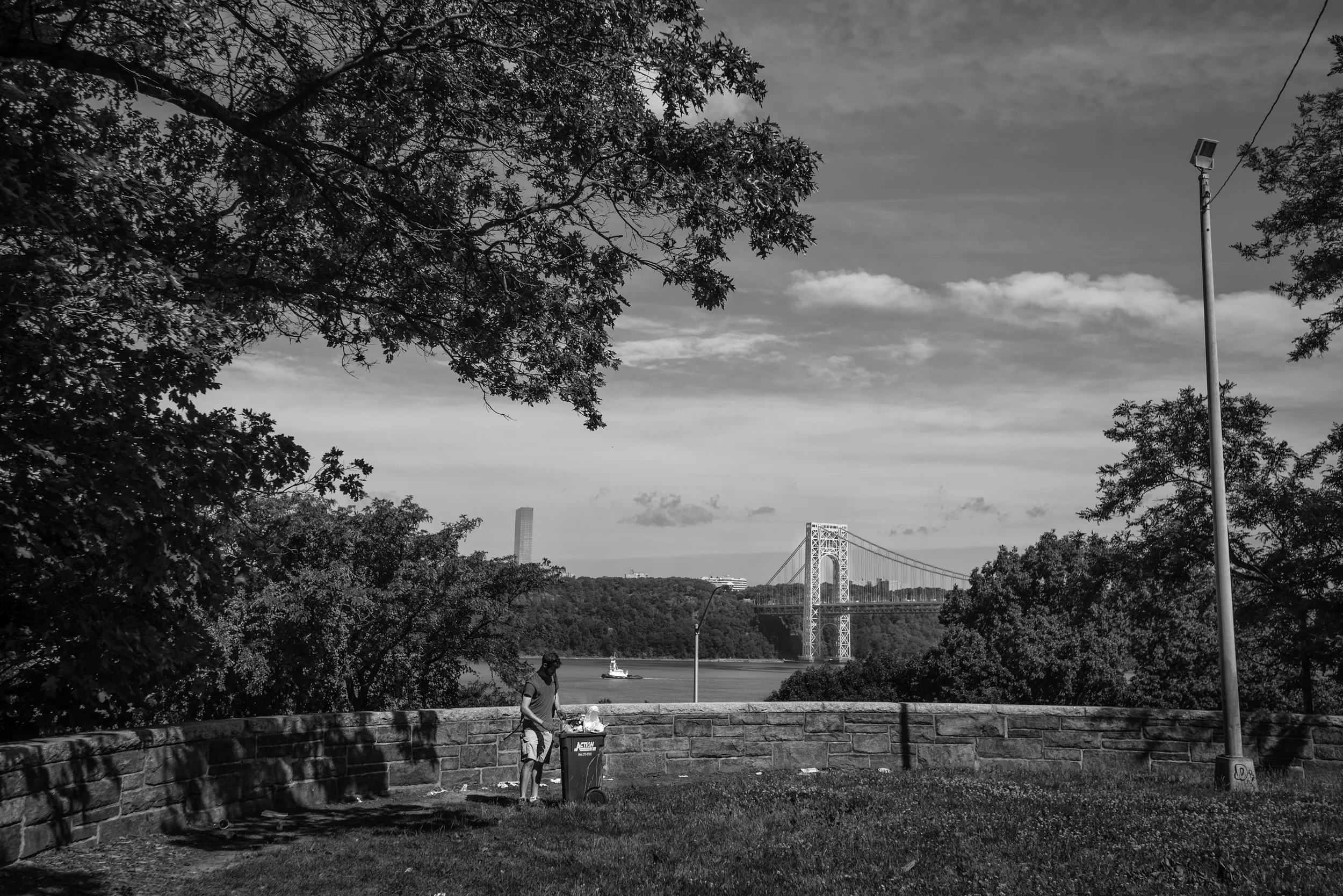
Matt Combs begins checking the traps set near the George Washington Bridge, in the Hudson River Greenway. Two teams of two Fordham University students began setting non-poisonous rat traps at the beginning of the summer. Their trapping began in Inwood, and ended at Central Park. With the research project beginning in 2013 in Downtown Manhattan, they hope to utilize the information collected from the rat samples to compile models that could help provide answers to questions about rat behavior in NYC.
In essence the models will eventually support the basic idea that rat communities within different boroughs will display different genetic differences.

Otis Wood checks a trap on Bradhurst Ave near 147th st. Two teams of two Fordham University students began setting non-poisonous rat traps at the beginning of the summer. The traps are set using a combination of peanut butter, bacon bits, but any greasy fattening foods will work. Their trapping began in Inwood, and ended at Central Park. With the research project beginning in 2013 in Downtown Manhattan, they hope to utilize the information collected from the rat samples to compile models that could help provide answers to questions about rat behavior in NYC.
In essence the models will eventually support the basic idea that rat communities within different boroughs will display different genetic differences.
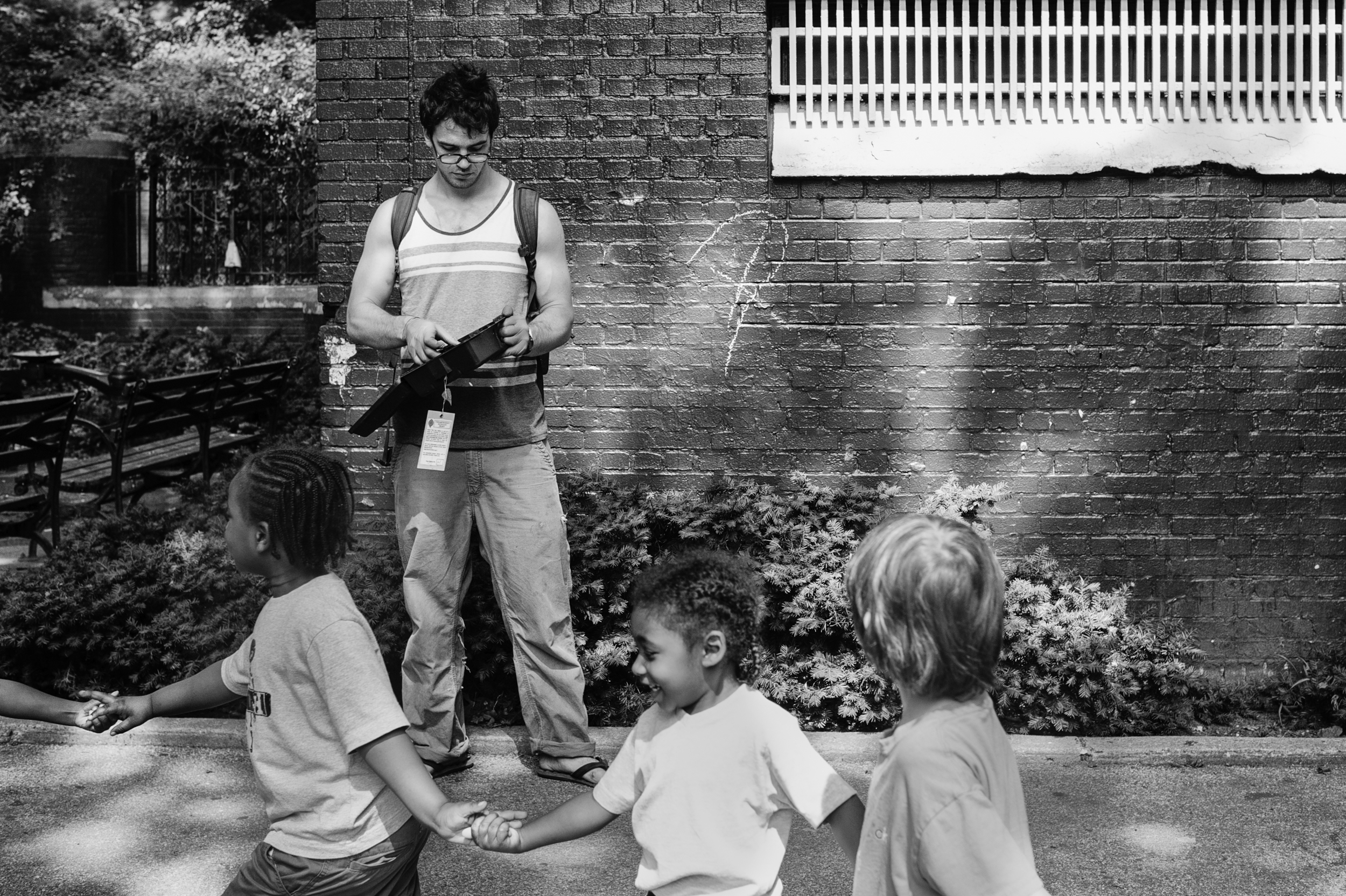
Otis Wood checks a trap on Bradhurst Ave at the 149th st playground in Jackie Robinson Park. Two teams of two Fordham University students began setting non-poisonous rat traps at the beginning of the summer. Playgrounds are generally thought of as hot beds for rat trapping given their propensity for trash, garbage, and food. Their trapping began in Inwood, and ended at Central Park. With the research project beginning in Downtown Manhattan, they hope to utilize the information collected from the rat samples to compile models that could help provide answers to questions about rat behavior in NYC.
In essence the models will eventually support the basic idea that rat communities within different boroughs will display different genetic differences.
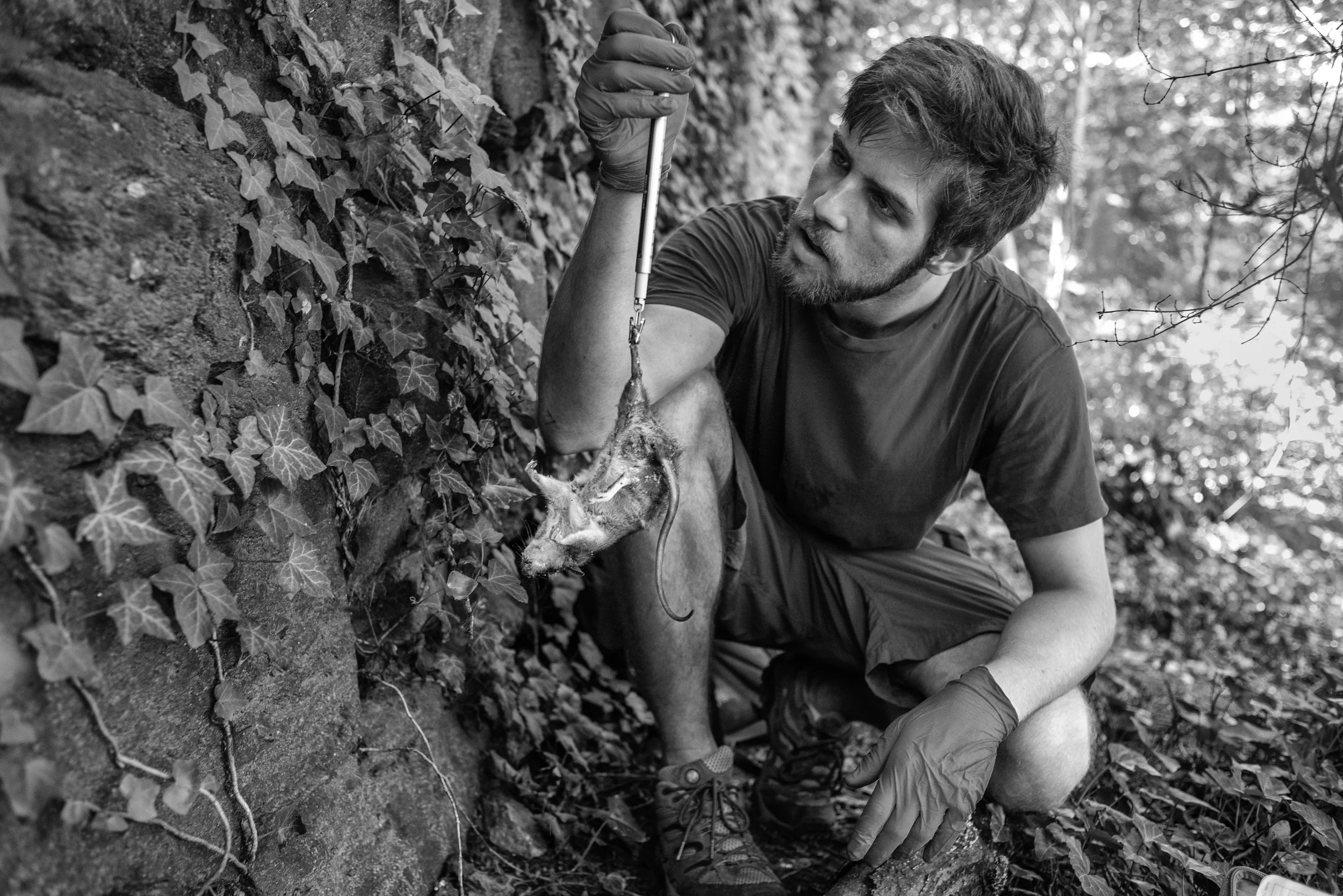
Matt Combs weighs a caught rat. The weight of the rat has no bearing on the quality of the sample, but the data is accumulated to help identify samples. Starting in 2013, Jason Munshi-South, an Associate Professor in
Department of Biological Sciences at Fordham University began trapping rats and conducting DNA research on how the Norvegicus Rattus, more commonly known as the Brown Norway rat- America's most common rat species, has evloved within the island of Manhattan. Data that has been collected so far has helped piece together a theory that rats have genetically differing traits throughout the different neighborhoods of the almost 34 sq mi stretch of land that makes up Manhattan.
In essence the models will eventually support the basic idea that rat communities within different boroughs will display different genetic differences.
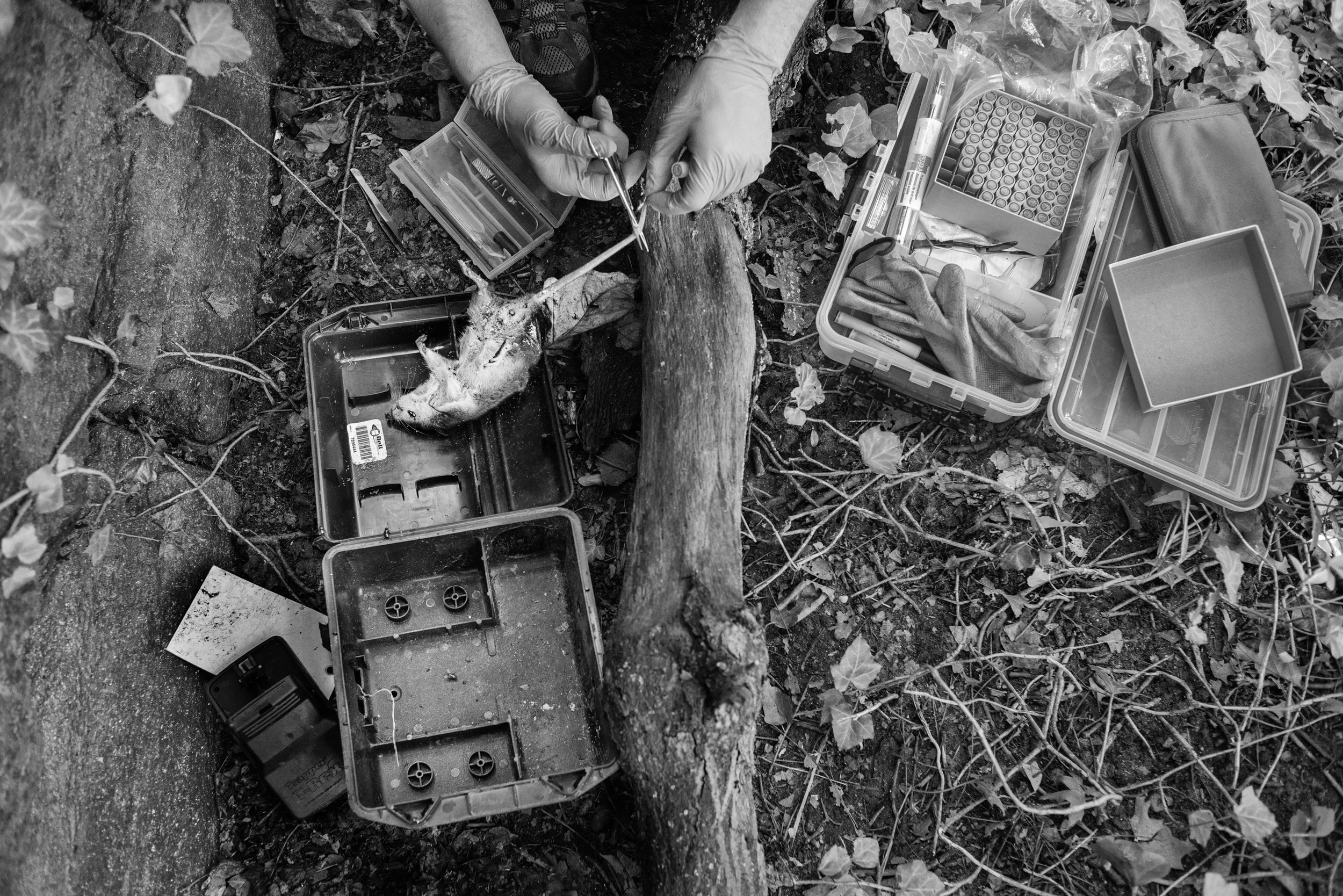
Matt Combs cuts a sample from a trapped rat. The sample can be any body part that contains DNA, but is most often taken from the tail or the foot/toes. If a rat corpse had decayed over the course of the weekend, as traps are not checked on weekends, to the point of not being able to aquire an adequet sample, the corpse is scrubbed. Starting in 2013, Jason Munshi-South, an Associate Professor in
Department of Biological Sciences at Fordham University began trapping rats and conducting DNA research on how the Norvegicus Rattus, more commonly known as the Brown Norway rat- America's most common rat species, has evloved within the island of Manhattan. Data that has been collected so far has helped piece together a theory that rats have genetically differing traits throughout the different neighborhoods of the almost 34 sq mi stretch of land that makes up Manhattan.
In essence the models will eventually support the basic idea that rat communities within different boroughs will display different genetic differences.

A deceased rat lies inside of the trap after being poisoned with Isothesia, a chloroform-like substance that the trappers use to kill rats that are still alive in the traps. Starting in 2013, Jason Munshi-South, an Associate Professor in
Department of Biological Sciences at Fordham University began trapping rats and conducting DNA research on how the Norvegicus Rattus, more commonly known as the Brown Norway rat- America's most common rat species, has evloved within the island of Manhattan. Data that has been collected so far has helped piece together a theory that rats have genetically differing traits throughout the different neighborhoods of the almost 34 sq mi stretch of land that makes up Manhattan.
In essence the models will eventually support the basic idea that rat communities within different boroughs will display different genetic differences.

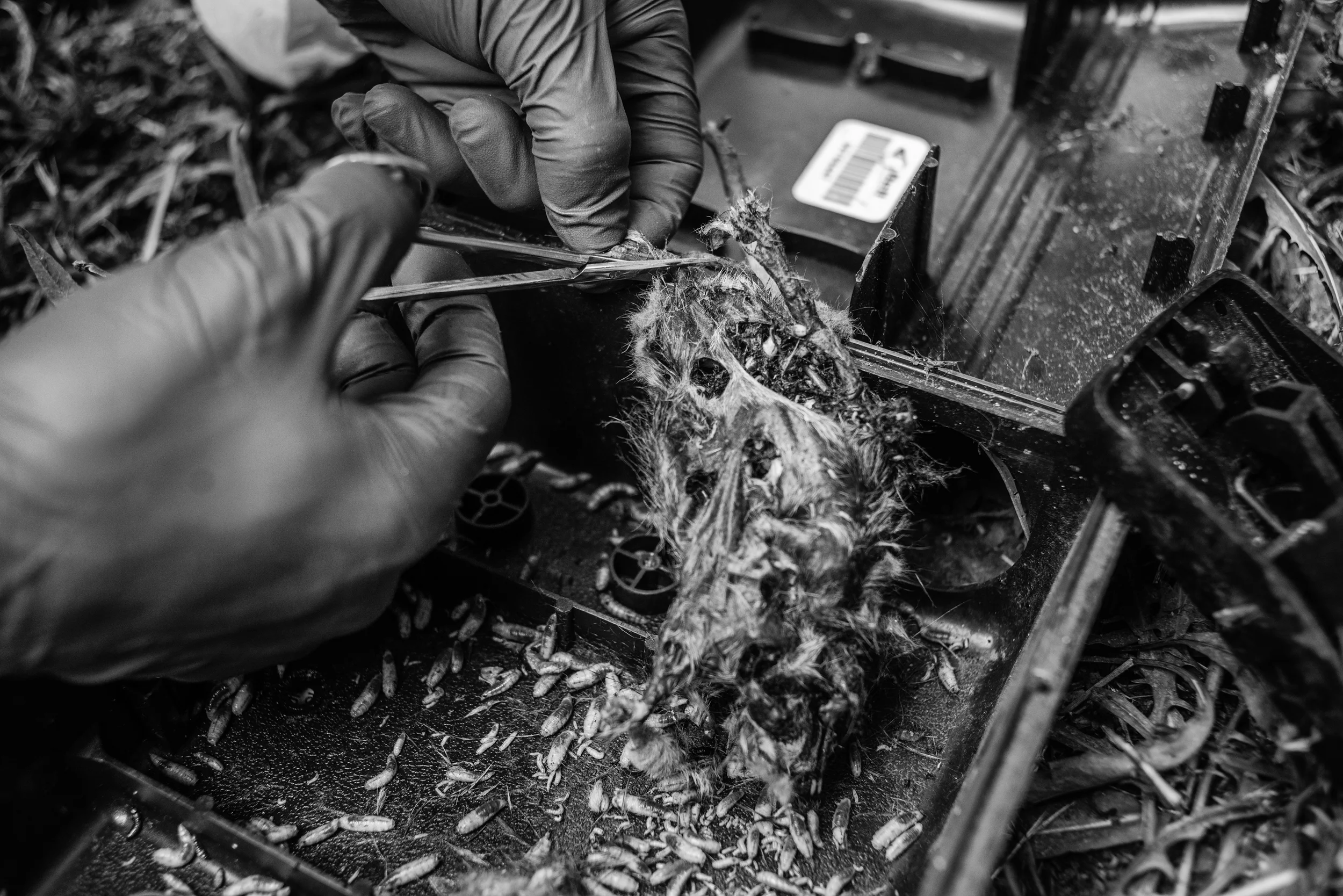
Matt Combs searches and cuts a piece of a usable DNA sample after a rat had decomposed over the weekend. Rats that are left in the traps for more than two or three days begin to decompose and are a hotbed for maggots and other scavengers.
Starting in 2013, Jason Munshi-South, an Associate Professor in
Department of Biological Sciences at Fordham University began trapping rats and conducting DNA research on how the Norvegicus Rattus, more commonly known as the Brown Norway rat- America's most common rat species, has evloved within the island of Manhattan. Data that has been collected so far has helped piece together a theory that rats have genetically differing traits throughout the different neighborhoods of the almost 34 sq mi stretch of land that makes up Manhattan.
In essence the models will eventually support the basic idea that rat communities within different boroughs will display different genetic differences.
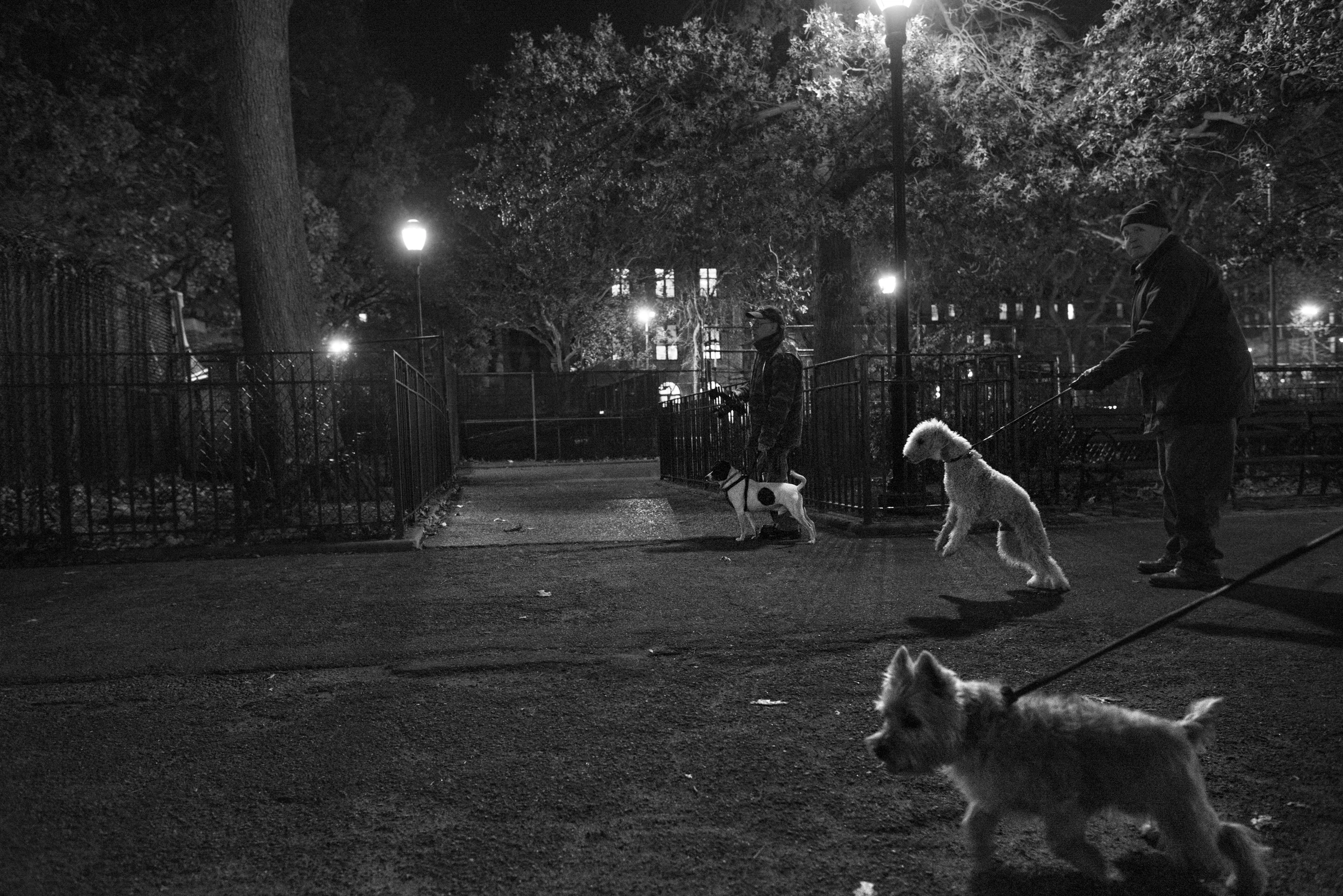
Catcher jumps at the chance of being let go to work Tompkins Square Park, during a first exploratory expedition for the group, R.A.T.S- Ryders Alley Trencherfed Society. RATS is a group of men and women who stalk the streets of New York City with their, more often than not, terriers hunting for NYC's arguably most notorious tourist attraction- the New York rat.
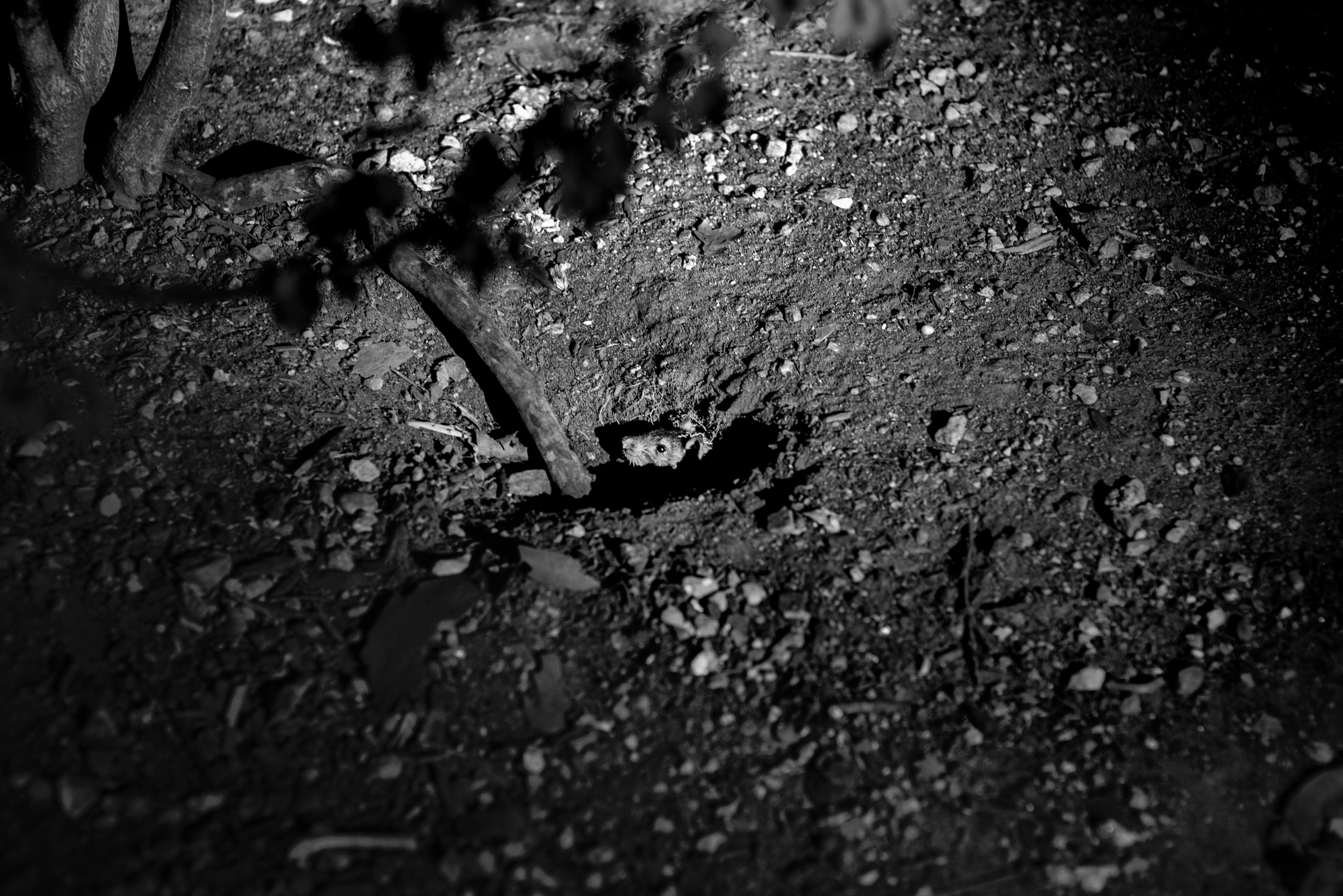
A rat peaks to inspect it's surroundings as several dogs sniff through other surrounding burrows. A group of men and women train their dogs to help rid of the city's immense rat population, often catching up to 20 rats in a single night, among a group of approximately 10 dog owners.
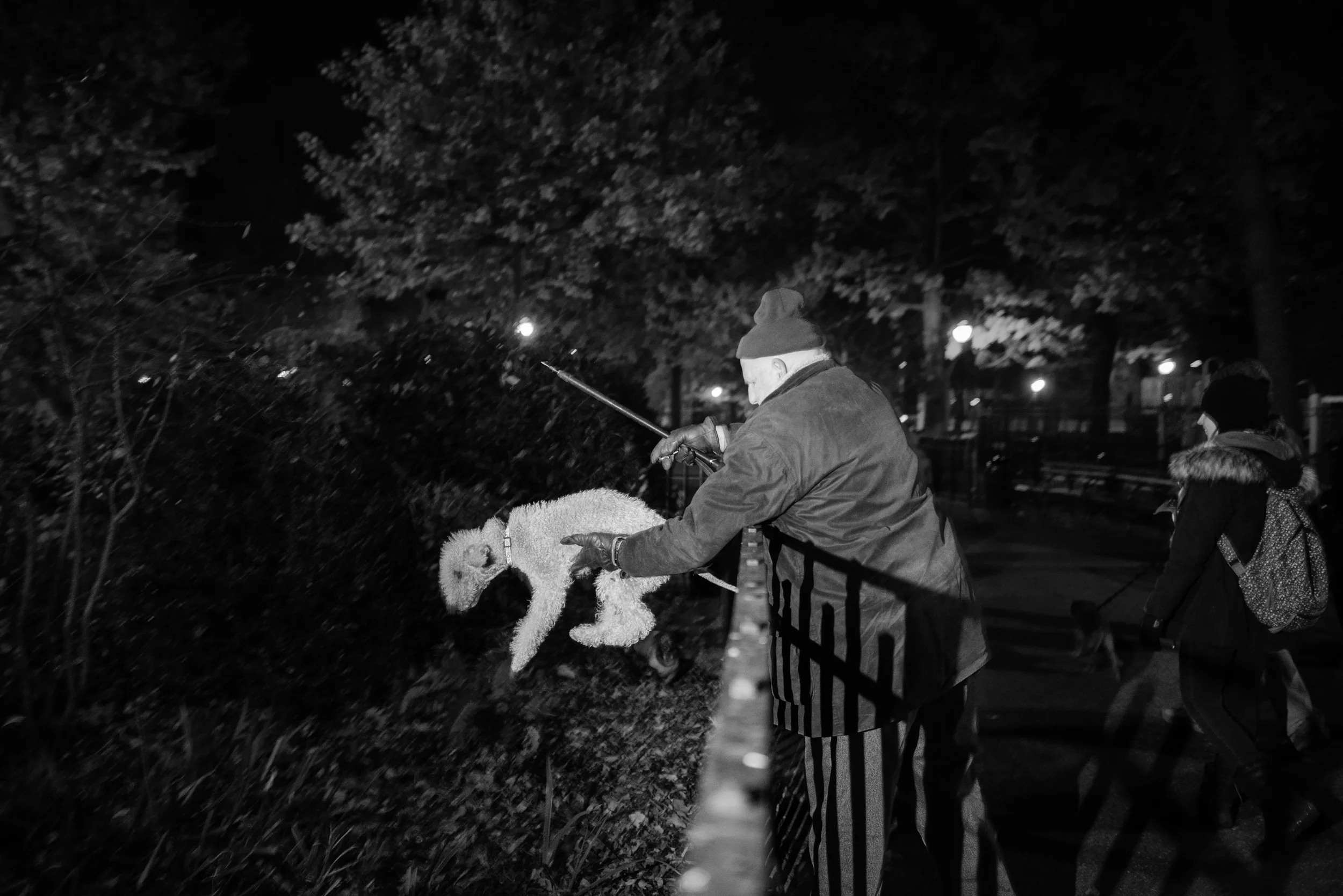
Richard places his Bedlington Terrier, Catcher, into a greenery space inside of Tompkins Square Park, after members of the group saw a rat scurry by.
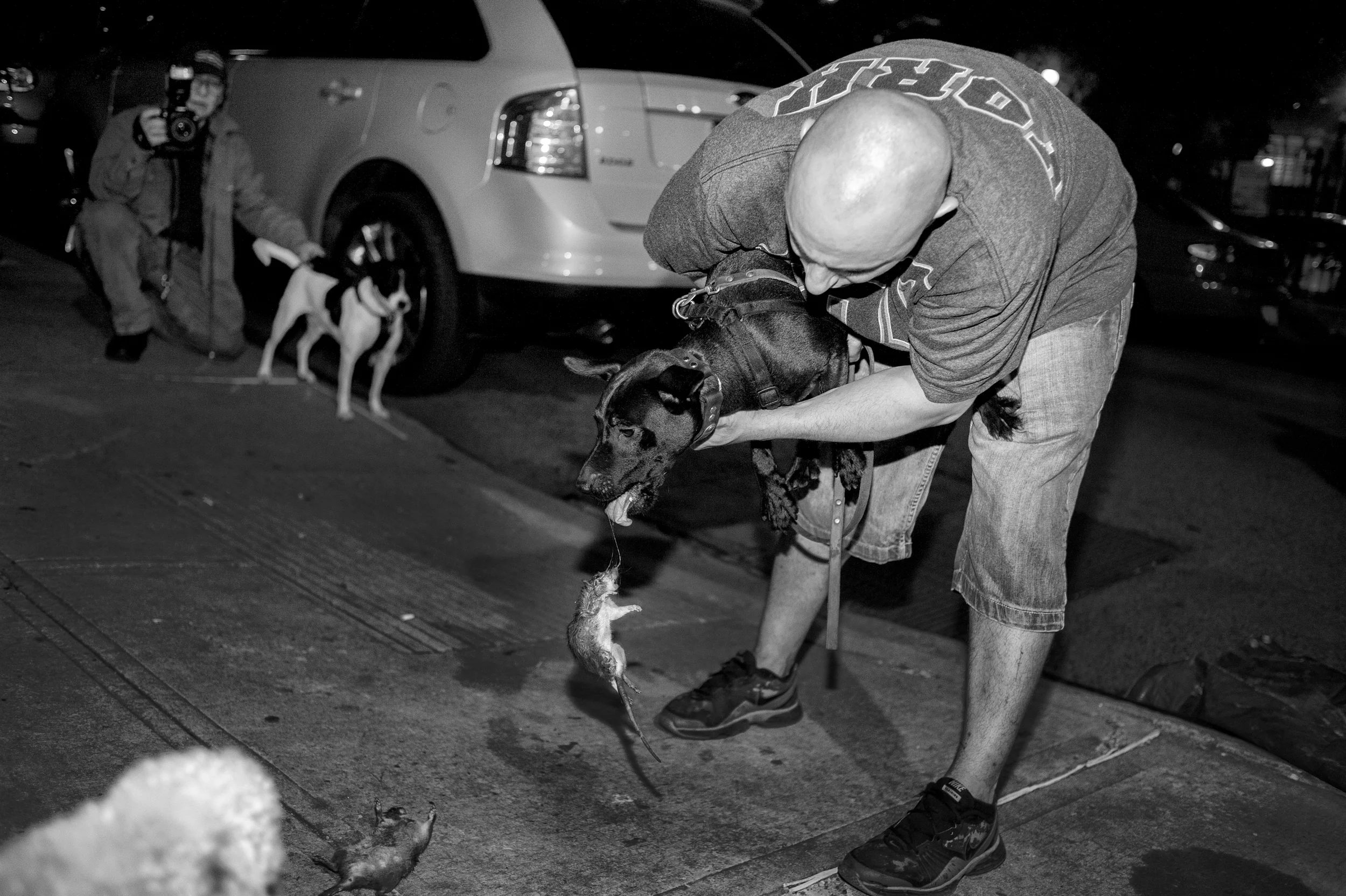
Mighty releases a successful catch. A group of men and women train their dogs to help rid of the city's immense rat population, often catching up to 20 rats in a single night, among a group of approximately 10 dog owners.

Matt examines a general map of the greenery spaces for Tompkins Square Park.
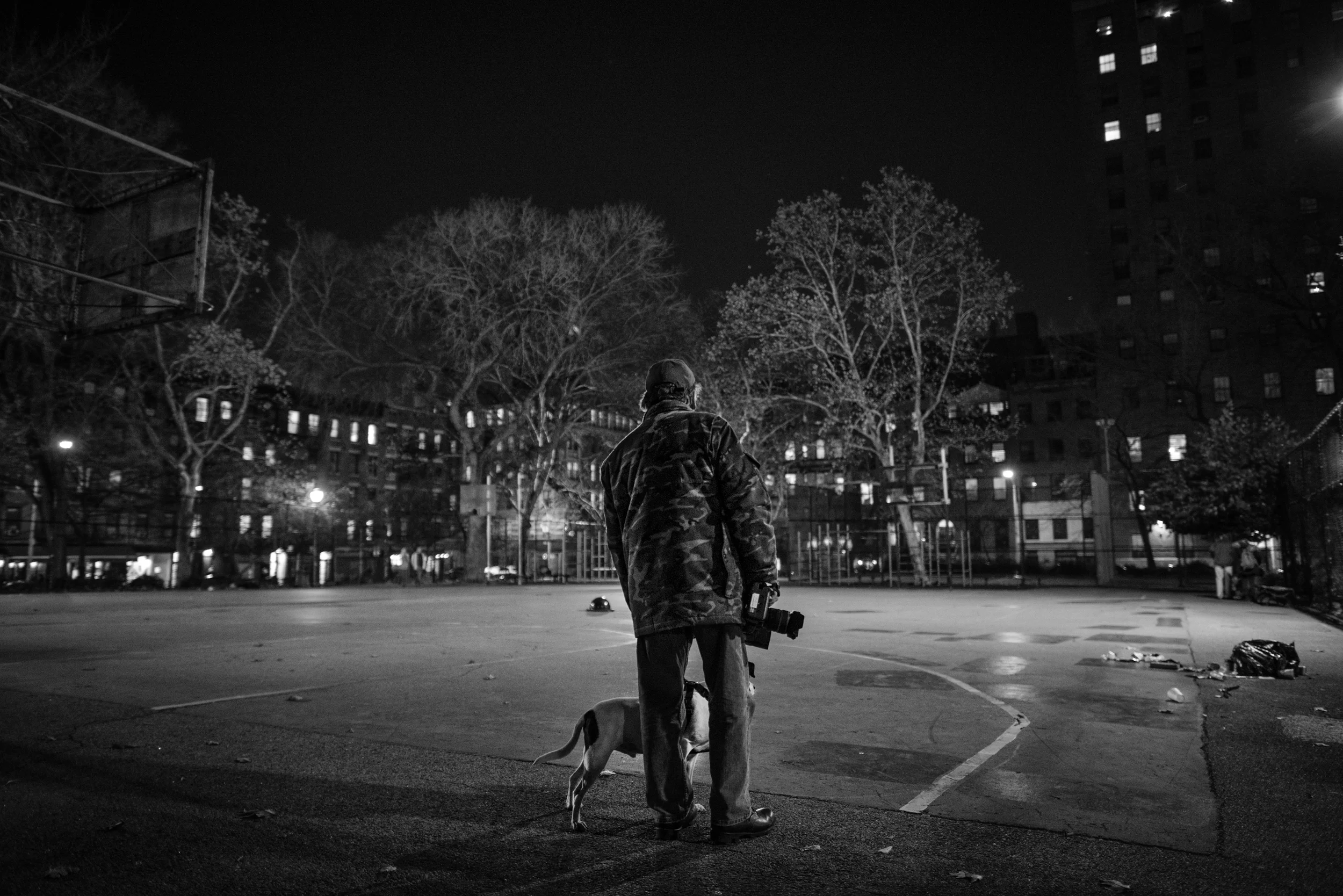
Bill and Paco, 6, stand looking for potential lucrative hunting spots inside of Tompins Square Park.
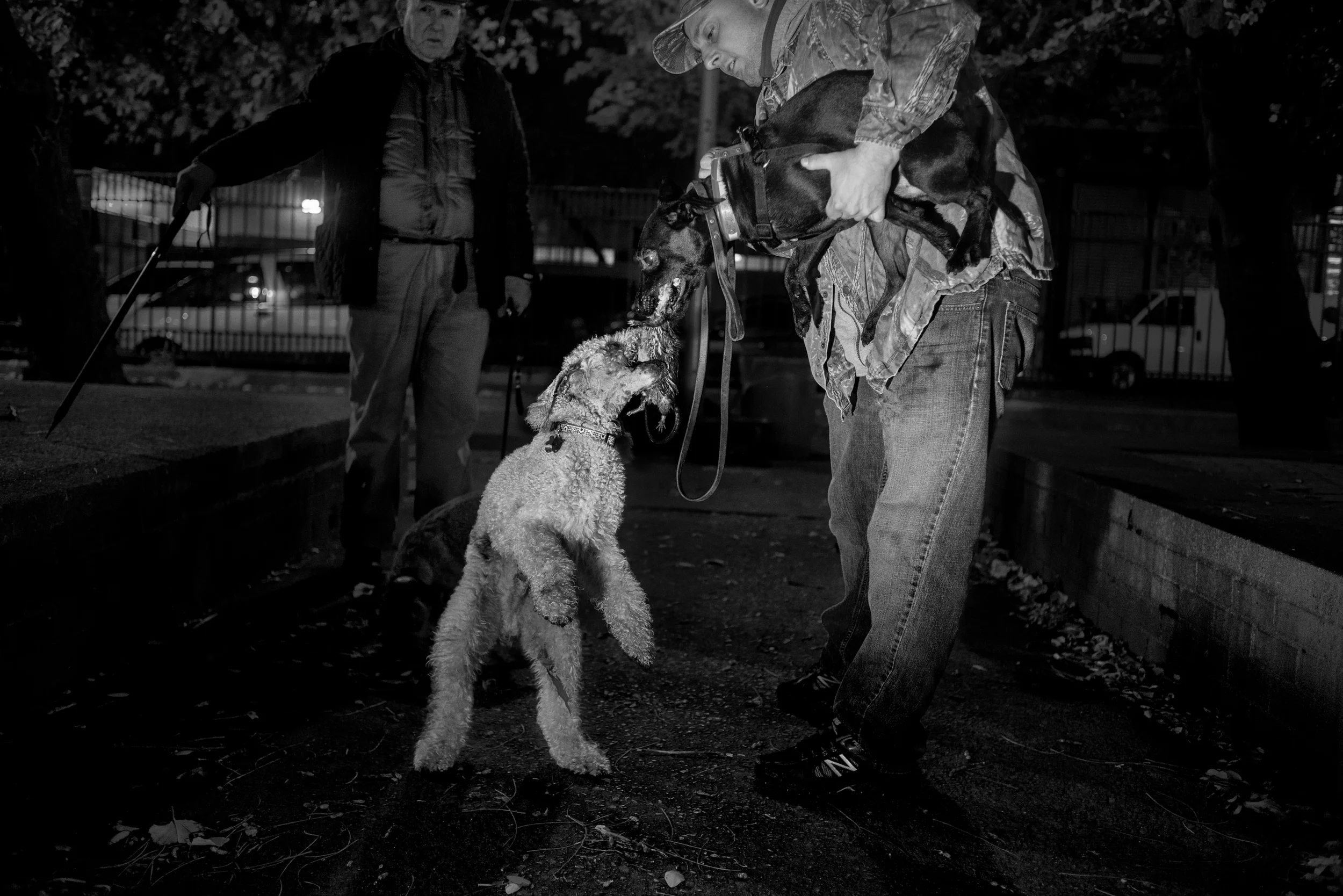
Catcher attempts to claim a portion of Mighty's catch. The group consists mainly of terriers, due to their inherent hunting ability. Catcher, a Bedlington Terrier were bred for hunting both above and below ground, while other breeds were bred for specifically one or the other.
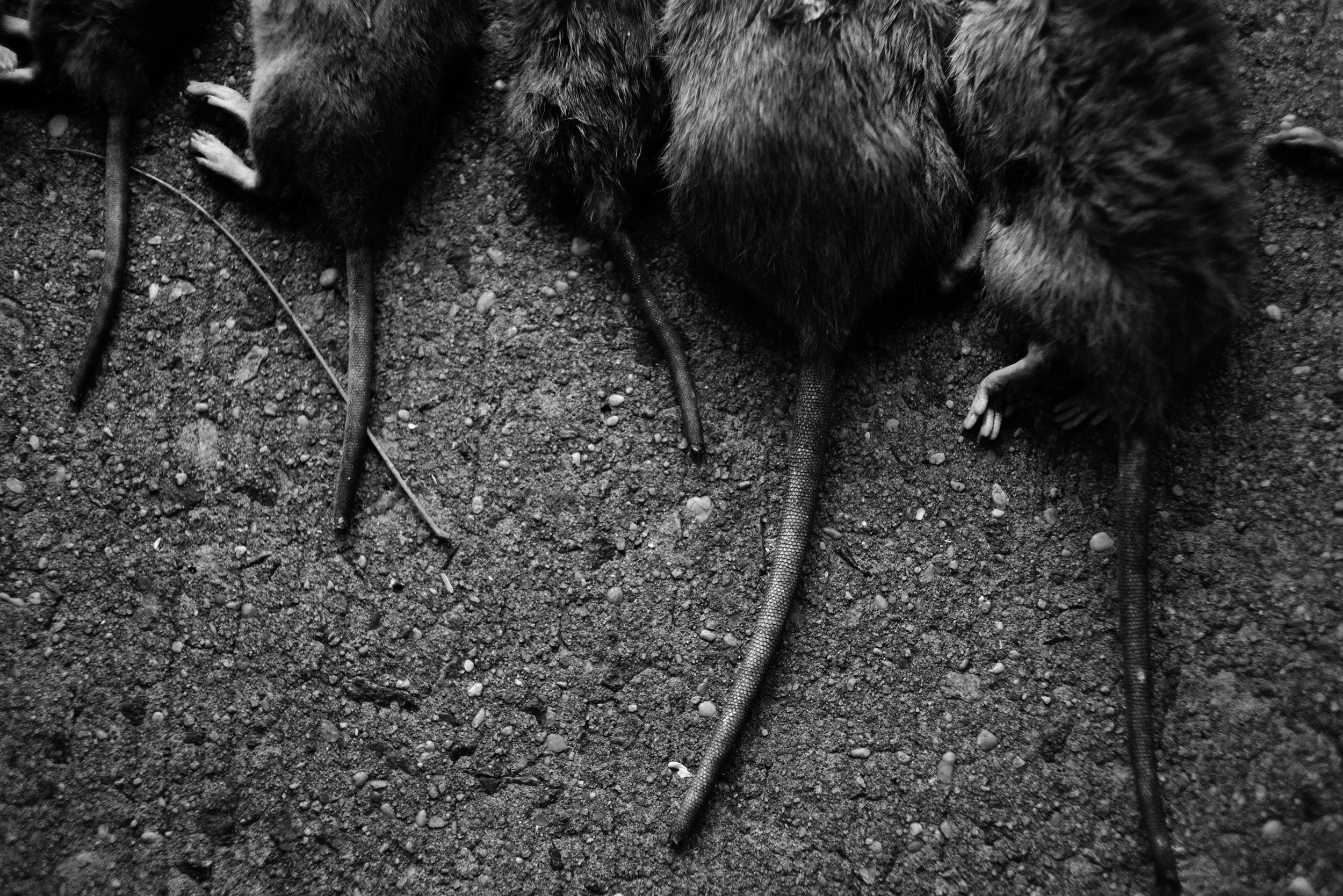
At a single dumpster, the team were able to catch 11 rats. A group of men and women train their dogs to help rid of the city's immense rat population, often catching up to 20 rats in a single night, among a group of approximately 10 dog owners.
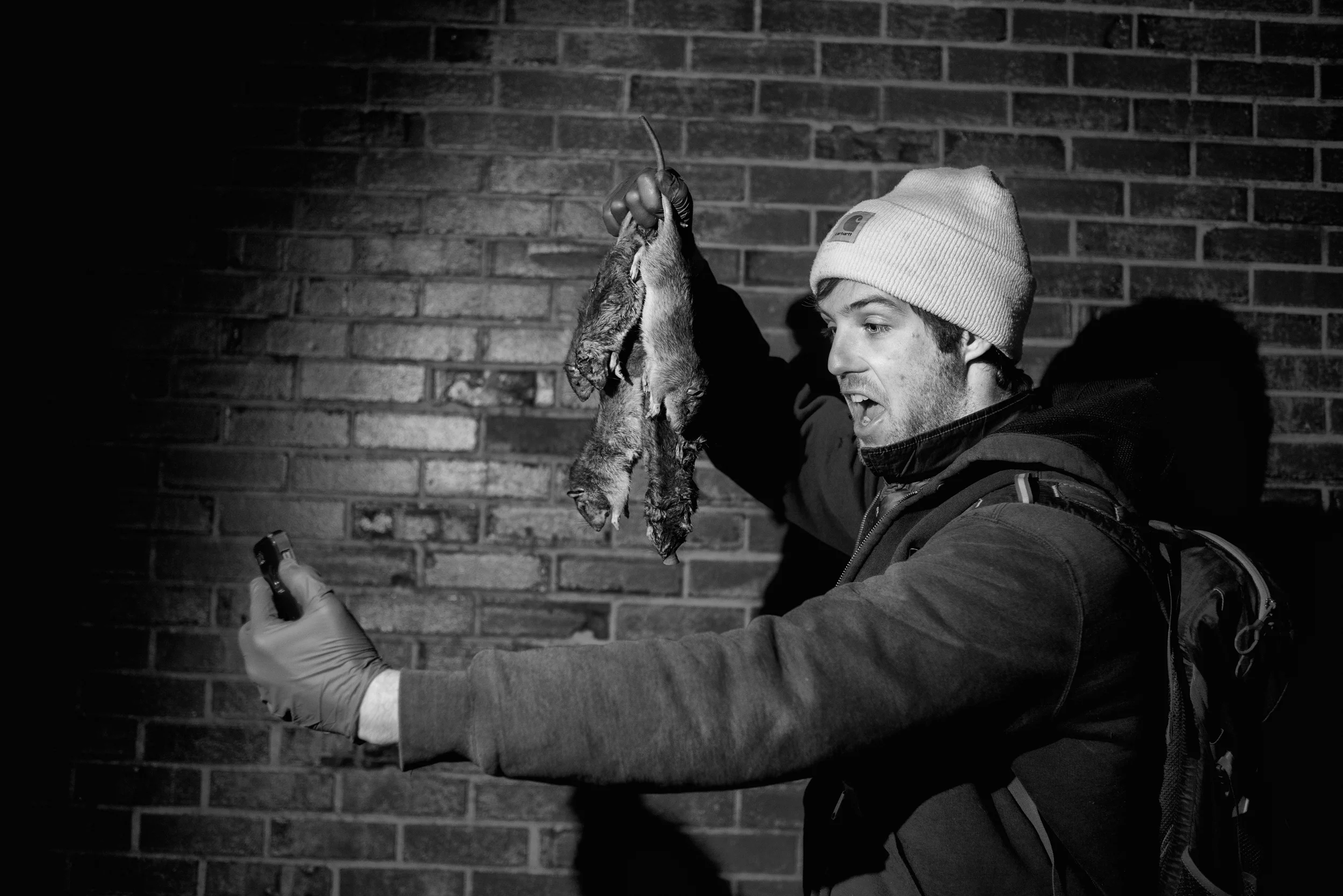
Matt holds up the night's successes for a selfie. A group of men and women train their dogs to help rid of the city's immense rat population, often catching up to 20 rats in a single night, among a group of approximately 10 dog owners. Each breed of dog is utilized for various specialized tasks. Some dogs are active chasers, flushing out rats from their burrows, while others sit patiently about 20 feet back in the event that a rat passes darts passed the first line of attack.
R.A.T.S. City


















